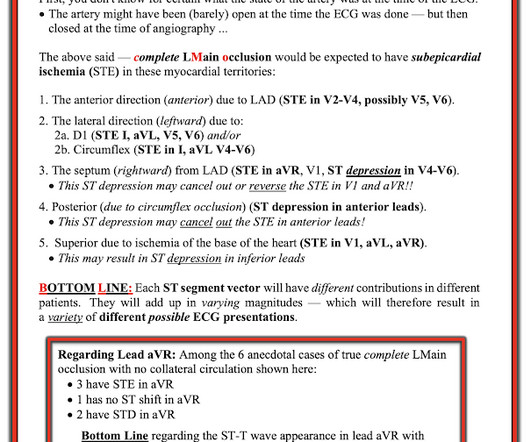What are treatment options for this rhythm, when all else fails?
Dr. Smith's ECG Blog
JULY 21, 2024
Cardiac function is poor, with akinesis of the LAD territory. There is no definite evidence of acute ischemia. (ie, Simply stated — t he patient was having recurrent PMVT without Q Tc prolongation, and without evidence of ongoing transmural ischemia. ( Some residual ischemia in the infarct border might still be present.










Let's personalize your content